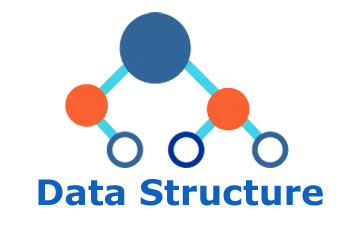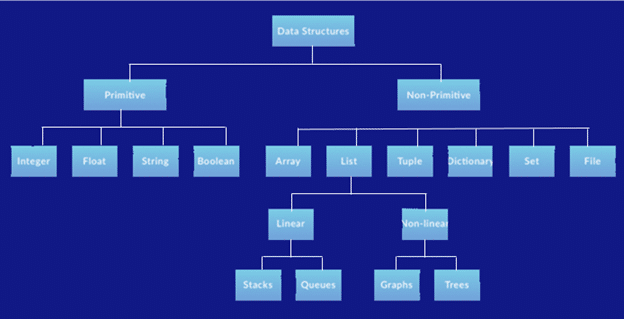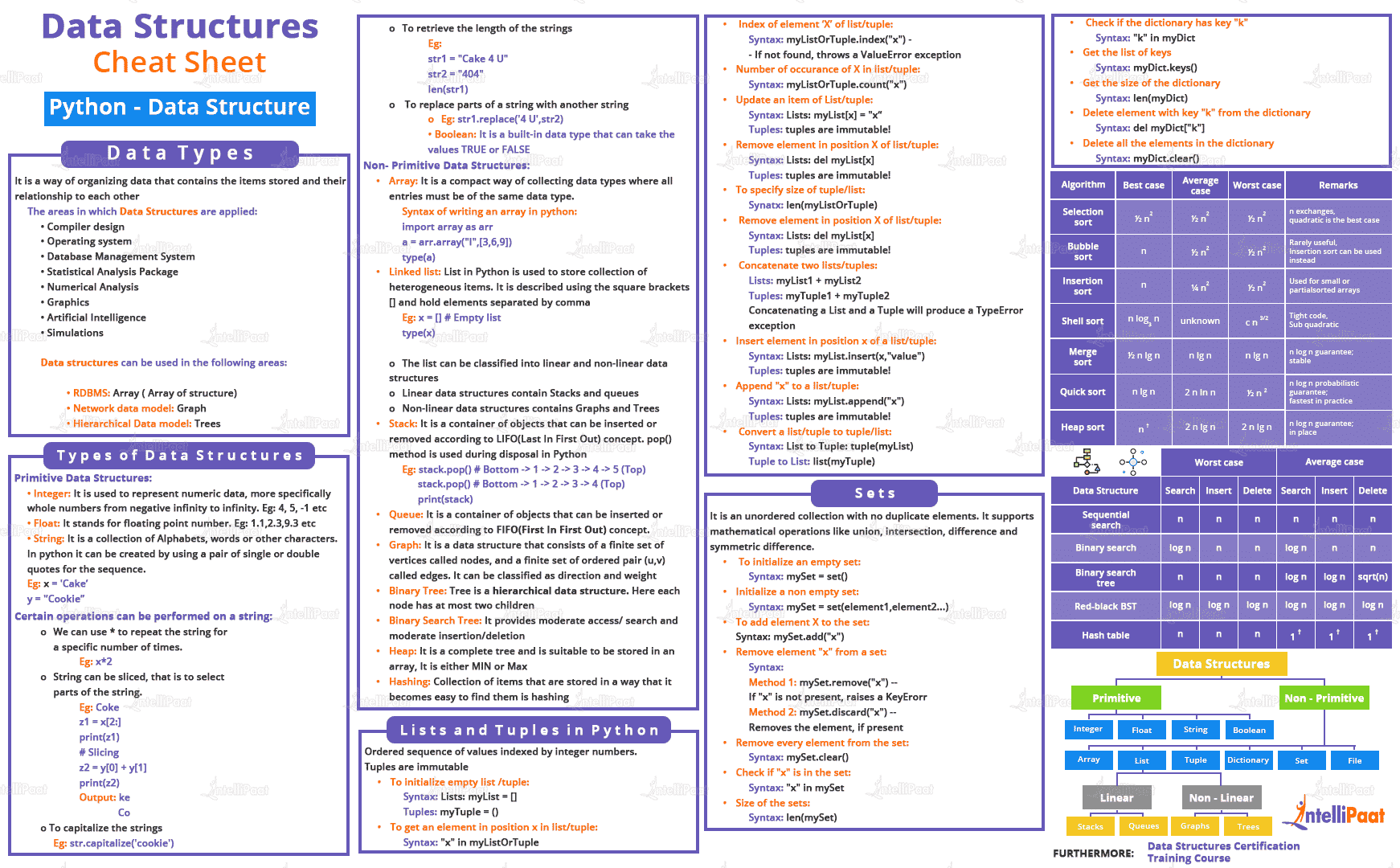Python Data Structures Cheat Sheet for Beginners and Experts
Unlock the power of Python data structures! A comprehensive cheat sheet for both beginners and experts, enhancing your code proficiency effortlessly. This comprehensive cheat sheet covers all the essential Python data structures, from lists and tuples to dictionaries and sets. Whether you're a beginner or an experienced Python developer, you'll find valuable information in this resource.
Data Structure is a collection of data types and set of rules with a format of organizing, managing and storage which can be used for efficient accessing and modification. Data structures are used in every field for storing and organizing data in the computer.
This Python Data Structure cheat sheet will help you understand what Data Structure is and the basic concepts and commands you must know to get started with it.
Data Structure: It is a way of organizing data that contains the items stored and their relationship to each other

The areas in which Data Structures are applied:
- Compiler design
- Operating system
- Database Management System
- Statistical Analysis Package
- Numerical Analysis
- Graphics
- Artificial Intelligence
- Simulations
Data structures used in the following areas:
- RDBMS: Array (Array of structure)
- Network data model: Graph
- Hierarchical Data model: Trees
Types of Data Structures:
Primitive Data Structures:
- Integer: It is used to represent numeric data, more specifically whole numbers from negative infinity to infinity
Example: 4, 5, -1 etc
- Float: It stands for floating-point number
Example: 1.1,2.3,9.3 etc.
- String: It is a collection of Alphabets, words, or other characters. In python String can be created by using a pair of single or double quotes for the sequence
Example:
x = ‘Cake’
y = ‘’Cookie’’Certain operations can be performed on a string:
- We can use * to repeat the string for a specific number of times
Example: x*2
- The string can be sliced, that is to select parts of the string
Example: Coke
z1 = x[2:]
print(z1)
# Slicing
z2 = y[0] + y[1]
print(z2)
Output: ke
Co- To capitalize the strings
Example:
str.capitalize('cookie')- To retrieve the length of the strings
Example:
str1 = "Cake 4 U"
str2 = "404"
len(str1)- To replace parts of a string with another string
Example:
str1.replace('4 U', str2)- Boolean: It is a built-in data type that can take the values TRUE or FALSE
Non- Primitive Data Structures:
- Array: It is a compact way of collecting data types where all entries must be of the same data type.
Syntax of writing an array in python:
import array as arr
a = arr.array("I",[3,6,9])
type(a)- Linked list: A list in Python is used to store collection of heterogeneous items. It is described using the square brackets [] and hold elements separated by comma
Example:
x = [] # Empty list
type(x)The list can be classified into linear and non-linear data structures
Linear data structures contain Stacks and queues
Non-linear data structures contain Graphs and Trees
- Stack: It is a container of objects that can be inserted or removed according to LIFO (Last in First Out) pop() method is used during disposal in Python
Example:
stack.pop() # Bottom -> 1 -> 2 -> 3 -> 4 -> 5 (Top)
stack.pop() # Bottom -> 1 -> 2 -> 3 -> 4 (Top)
print(stack)- Queue: It is a container of objects that can be inserted or removed according to FIFO (First in First Out)
- Graph: It is a data structure that consists of a finite set of vertices called nodes, and a finite set of ordered pair (u,v) called edges. It can be classified as direction and weight
- Binary Tree: Tree is a hierarchical data structure. Here each node has at most two children
- Binary Search Tree: It provides moderate access/ search and moderate insertion/ deletion
- Heap: It is a complete tree and is suitable to be stored in an array, it is either MIN or Max
- Hashing: Collection of items that are stored in a way that it becomes easy to find them is hashing

Lists and tuples (In Python):
An ordered sequence of values indexed by integer numbers. Tuples are immutable
- To initialize empty list /tuple:
Syntax:
Lists: myList = []
Tuples: myTuple = ()- To specify size of tuple/list:
Syntax:
len(myListOrTuple)- To get an element in position x in list/tuple:
Syntax:
"x" in myListOrTuple- Index of element ‘X’ of list/tuple
Syntax:
myListOrTuple.index("x") -- If not found, throws a ValueError exception- A number of occurrences of X in list/tuple:
Syntax:
myListOrTuple.count("x")- Update an item of List/tuple:
Syntax:
Lists: myList[x] = "x"
Tuples: tuples are immutable!- Remove element in position X of list/tuple:
Syntax:
Lists: del myList[x]
Tuples: tuples are immutable!- Concatenate two lists/tuples:
Lists: myList1 + myList2
Tuples: myTuple1 + myTuple2
Concatenating a List and a Tuple will produce a TypeError exception- Insert element in position x of a list/tuple
Syntax:
Lists: myList.insert(x, "value")
Tuples: tuples are immutable!- Append “x” to a list/tuple:
Syntax: Lists: myList.append("x")
Tuples: tuples are immutable!- Convert a list/tuple to tuple/list:
Syntax: List to Tuple: tuple(myList) Tuple to List: list(myTuple)
Sets:
Set is an unordered collection with no duplicate elements. It supports mathematical operations like union, intersection, difference, and symmetric difference.
- To initialize an empty set:
Syntax: mySet = set()- Initialize a non-empty set
Syntax: mySet = set(element1, element2...)- To add element X to the set
Syntax: mySet.add("x")- Remove element “x” from a set:
Syntax:
Method 1: mySet.remove("x") -- If "x" is not present, raises a KeyErorr
Method 2: mySet.discard("x") -- Removes the element, if present- Remove every element from the set
Syntax: mySet.clear()- Check if “x” is in the set
Syntax: "x" in mySet- Union of two sets
Syntax:
Method 1: mySet1.union(mySet2)
Method 2: mySet1 | mySet2- Intersection of two sets
Syntax:
Method 1: mySet1.intersect(mySet2)
Method 2: mySet1 & mySet2- Difference of two sets
Syntax:
Method 1: mySet1.difference(mySet2)
Method 2: mySet1 - mySet2- Symmetric difference of two sets
Syntax:
Method 1: mySet1.symmetric_difference(mySet2)
Method 2: mySet1 ^ mySet2- Size of the sets:
Syntax:
len(mySet)Dictionaries:
It is an unordered set of key-value pairs
- Initialize an empty Dict
Syntax:
myDict = {}- Add an element with key “k” to the Dict
Syntax:
myDict["k"] = value- Update the element with key “k”
Syntax:
myDict["k"] = newValue- Get element with key “k”
Syntax:
myDict["k"] -- If the key is not present, a KeyError is raised- Check if the dictionary has key “k”
Syntax:
"k" in myDict- Get the list of keys
Syntax:
myDict.keys()- Get the size of the dictionary
Syntax:
len(myDict)- Delete element with key “k” from the dictionary
Syntax:
del myDict["k"]- Delete all the elements in the dictionary
Syntax:
myDict.clear()Algorithms and the complexities:
| Algorithm | Best case | Average case | Worst case | Remarks |
| Selection sort | ½ n 2 | ½ n 2 | ½ n 2 | n exchanges, quadratic is the best case |
| Insertion sort | n | ¼ n 2 | ½ n 2 | Used for small or partial-sorted arrays |
| Bubble sort | n | ½ n 2 | ½ n 2 | Rarely useful, Insertion sort can be used instead |
| Shell sort | n log3 n | unknown | c n 3/2 | Tight code, Sub quadratic |
| Merge sort | ½ n lg n | n lg n | n lg n | n log n guarantee; stable |
| Quick sort | n lg n | 2 n ln n | ½ n 2 | n log n probabilistic guarantee; fastest in practice |
| Heapsort | n † | 2 n lg n | 2 n lg n | n log n guarantee; in place |
Symbol Table:
| Worst case | Average case | |||||
| Data Structure | Search | Insert | Delete | Search | Insert | Delete |
| Sequential search | n | n | n | n | n | n |
| Binary search | log n | n | n | log n | n | n |
| Binary search tree | n | n | n | log n | log n | sqrt(n) |
| Red-black BST | log n | log n | log n | log n | log n | log n |
| Hash table | n | n | n | 1 † | 1 † | 1 † |
You can also download the printable PDF of this Data Structure cheat sheet

Source: https://intellipaat.com
#datastructures #algorithms #dsa #python
